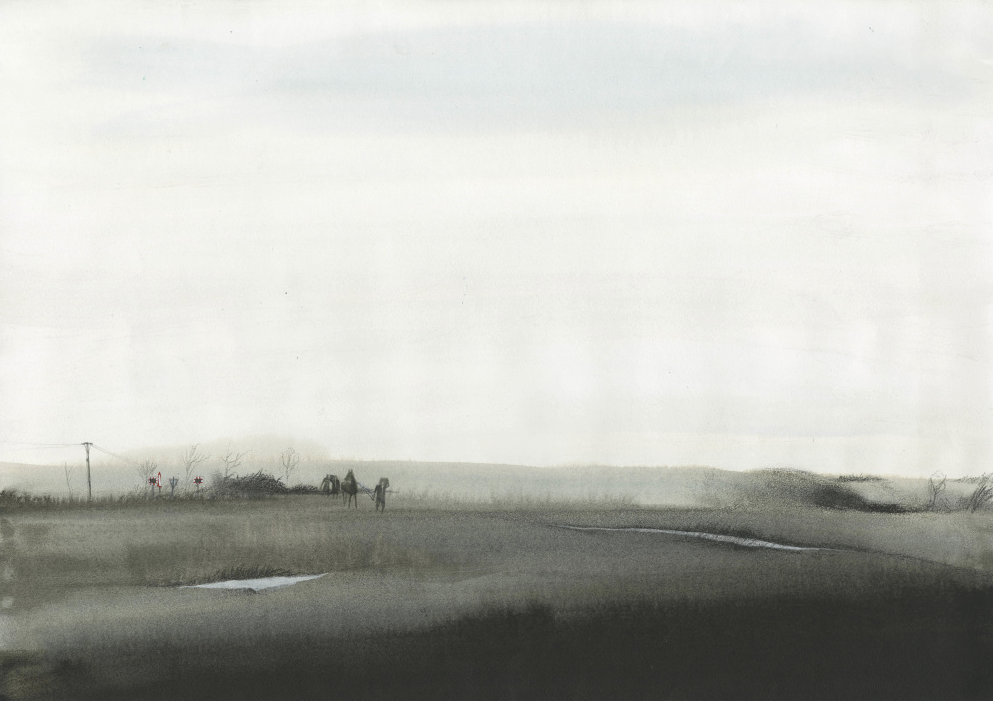
Illustration by Leah Fusco from her project The Owling. Image taken from: http://www.leahfusco.co.uk/Owling
In my last post I spoke about how I enjoy finding out about and speculating about the layers of lives lived in old buildings. Leah Fusco is an illustrator who has explored layers of lives lived in landscape in various projects. I’ve put up an image from her project The Owling here. Owling is an old word for smuggling sheep and wool from England to France. I knew this when I chose the name for my blog and have always been intrigued. Leah says that her “…images trace smuggling routes across the marshes and contain historic and contemporary details within the landscape. They allude to the endurance of smuggling in Romney Marsh, from wool to drugs, because of the unique physical qualities of the marshes – its isolation, sparse population and proximity to the coast. From a distance, the images are read as anonymous landscape paintings but close up reveal stories of this hidden industry.”
She goes on to say that “marshlands are areas of transience; geographic and man-made details are revealed and concealed repeatedly, through dynamic water levels. I’m interested in how water based processes make history (in)visible and how illustration practice can be employed to explore and capture alternative timeframes and temporality.” In another project called Mapping Northeye she explores the physical reshaping of a medieval island in East Sussex over ten centuries. She says, “drawing together key pieces of primary (my local drawings) and secondary research (archive material), the work examines the role of illustration as a narrative device for inhabiting territory between past and present readings of the site.”
I love the atmosphere of Leah’s illustrations. It only dawns on me slowly, as I peer into the mist, that I’m seeing ancient ghosts alongside a modern day road sign. It’s disorientating, capturing a strange sort of motion sickness, as if by looking at them I am indeed occupying several layers of time all at once. Wonderful stuff. You can see more of Leah’s work by going to her website here.






